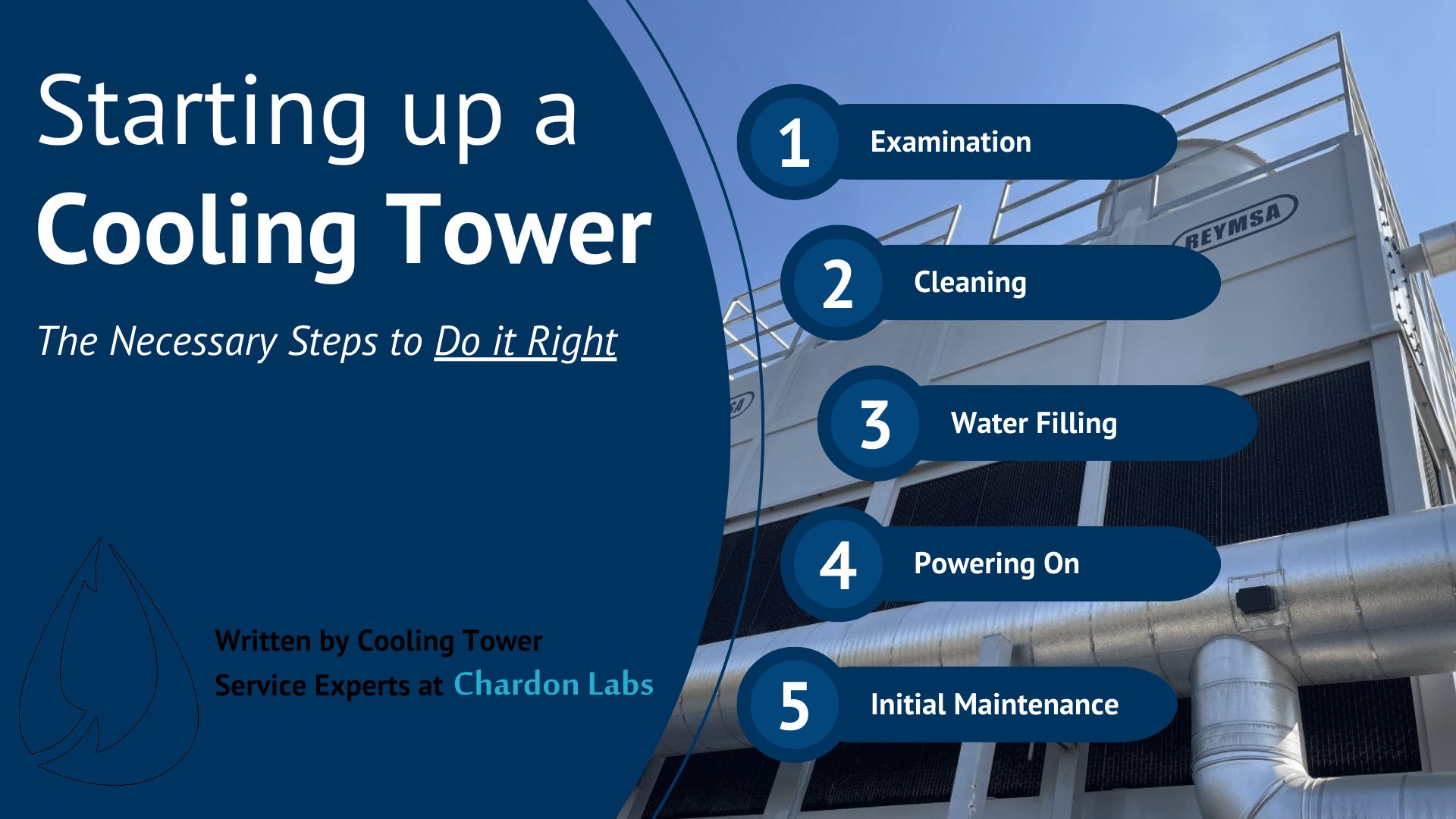
Cooling towers in your facility may be seasonal and require a startup procedure. This would occur after it has been laid up for the season or if it is a new tower undergoing a first-time setup. It is important to startup a cooling tower correctly to help with efficiency, maintenance, and safety.
Conducting a thorough examination each season will help you maintain your cooling tower. You should be on the lookout for issues, as these will only grow and cause large problems. Below are the issues you should be inspecting for:
Keeping a cooling tower clean is important for its functionality. The tower’s ability to cool is hampered when there is biofilm, dirt, and debris in the way of the heat transfer surface. Additionally, dirty towers can lead to bacteria-causing corrosion. Here are some of the common cleaning procedures for a cooling tower that has been left dormant:
Ongoing cleaning is something that needs to be scheduled when your system is in use. This should be used in conjunction with consistent chemical water treatment. An in-depth guide to cleaning and maintaining the cleanliness of your cooling tower can be found here.
To fill your system properly you will need to fill the basin to the necessary level. These procedures will go over the initial filling of the cooling tower:
To start circulating water and cooling your system, you will need to switch on your power. Here are the guidelines to initially start-up and power on your cooling tower:
After a successful startup, you will need to immediately begin planning for maintenance if you want your cooling tower to run properly, operate energy efficiently, and not develop common problems. All cooling towers require regular maintenance to avoid system downtime. Their efficiency is highly dependent on the quality of the water and the heat-transfer surface. If your system is maintained you end up using less water and electricity. In addition to this, you save on repair and replacement costs of the system.
The longer a system is not maintained the more serious and difficult to fix the problems will be. For example, the amount of time it takes to remove scale in a cooling tower will take around the same amount of time it took to build-up. If it took a year to build-up it will take a year to remove with traditional methods. For some issues, such as corrosion, it may be too late and require a replacement of the affected parts. Replacements are exceedingly expensive. Considering these reasons, here are the essential tips to maintain your cooling tower:
A tower’s cooling efficiency is highly dependent on its water and heat transfer surfaces. Here at Chardon Laboratories, water treatment is our expertise. We offer a full-service water treatment program that includes testing, part setup, monitoring, efficiency maximization, and more. We are service-based and do more than sell chemicals. Find out more here. The methods below are some of the most important for chemical water treatment.
Chardon Laboratories doesn’t just fix your problems, we prevent them. We are proactive in our service approach, solving potential issues before they become large, costly problems.
With over 55 years in chemical water treatment, put your valuable systems and energy maintenance in the right hands. Reach out to Chardon Laboratories today by clicking here or call us at (380) 224-7395.